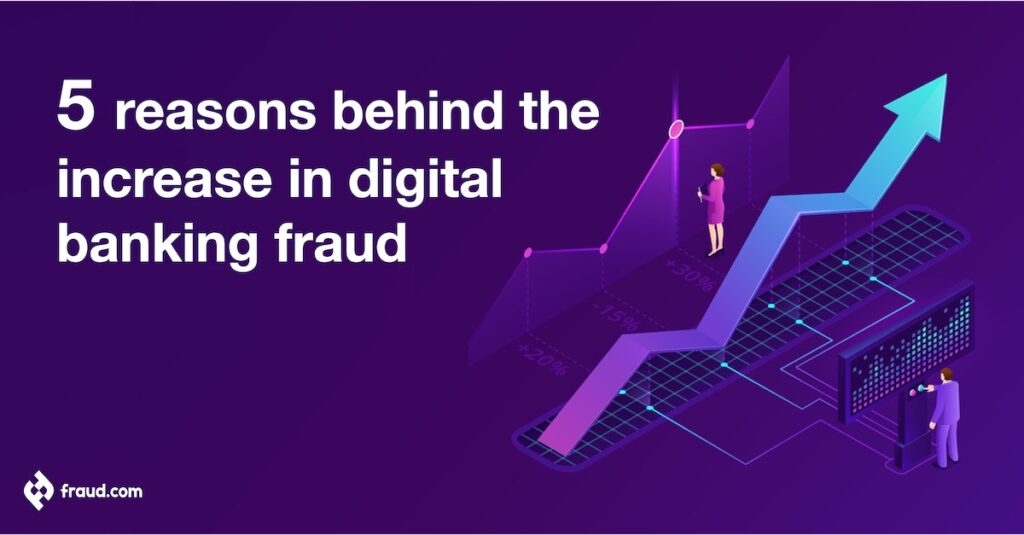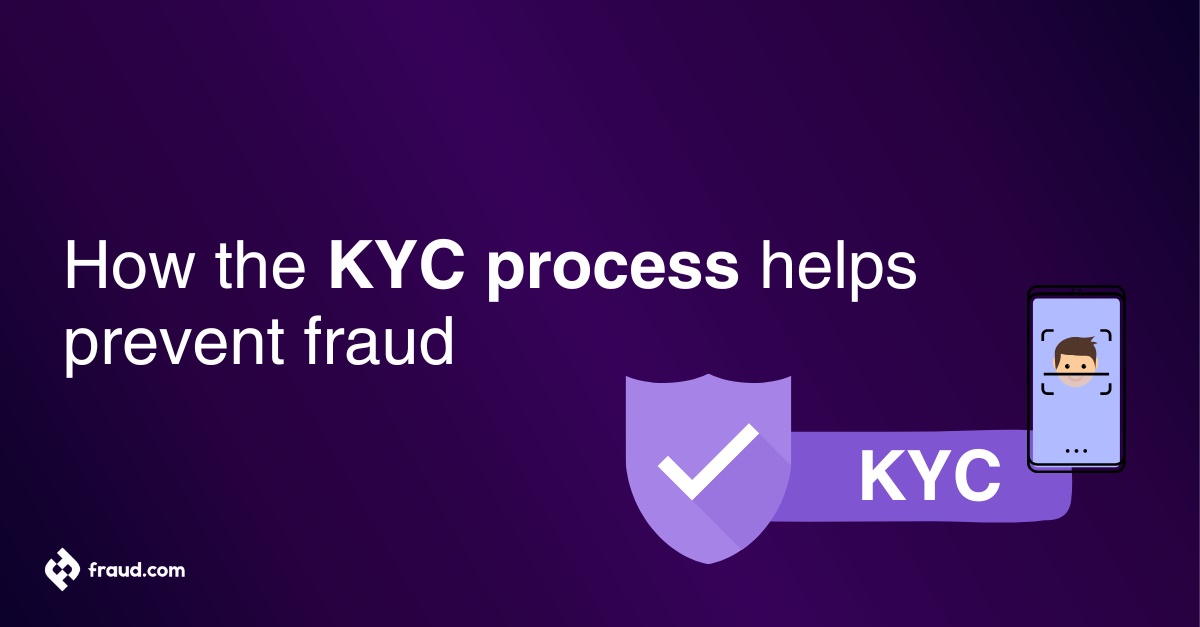Digital banking has become increasingly popular in recent years, providing customers with convenient access to their accounts and enabling financial institutions to streamline their operations. However, with the rise of digital banking comes an increased risk of fraud. Fraudsters are becoming more sophisticated in their techniques, making it harder for banks and their customers to detect and prevent fraudulent activity.
In this article, we will explore the 5 key reasons behind the increase in digital banking fraud. Understanding these factors is crucial for financial institutions and banks to take proactive measures to safeguard their customers’ assets and information, and for individuals to protect themselves from financial losses and identity theft.
Table of Contents
ToggleWhat is digital banking fraud?
Digital banking fraud is a type of fraud that targets online or mobile banking systems. It involves a range of fraudulent practices, such as stealing personal information, gaining unauthorised access to accounts, and making fraudulent transactions. Hackers and cybercriminals use different methods to commit digital banking fraud, including phishing, malware, and social engineering tactics.
As digital banking becomes more popular, fraudsters are becoming more sophisticated in their tactics, making it increasingly difficult for banks and their customers to identify and prevent fraudulent activities. Therefore, it is important for both individuals and financial institutions to be aware of the causes of banking fraud and take appropriate measures to protect themselves from such threats. As digital banking continues to evolve, it is crucial to remain vigilant and take necessary precautions to safeguard sensitive personal and financial information.
The increase in digital banking fraud
Digital banking fraud has been on the rise, with fraudsters becoming more sophisticated in their methods to exploit vulnerabilities in online and mobile banking systems. Here are the five main reasons behind the increase in digital banking fraud. By understanding these reasons, individuals and financial services institutions can take steps to protect themselves from these threats and create a safer online banking environment:
Technology advancement
Online banking
Online banking allows customers to access their accounts and perform transactions from anywhere at any time. However, this convenience also presents risks, such as phishing attacks, account takeover and malware that can steal login credentials.
Mobile banking
Mobile banking has become increasingly popular due to its ease of use and convenience. However, mobile devices are also more vulnerable to cyber-attacks and financial crime than desktop computers. To combat these risks, mobile banking apps should implement strong authentication measures, such as biometric verification, and users should be educated on best practices for securing their mobile devices.
ATMs
ATMs are convenient for accessing cash, but they are also vulnerable to fraud like skimming and hacking. Criminals can steal credit card information through skimming or installing malicious software on ATMs. The consequences of ATM fraud can be severe, including cleared bank accounts and financial losses. Security measures like maintenance, transaction monitoring, and education are important to combat ATM fraud.
Digital payment systems
Digital payment systems, such as PayPal, have made online transactions more accessible and convenient. However, they also present new opportunities for fraudsters to exploit.
How fraud.com can help mitigate this risk
Effective identity proofing and authentication by Udentify and fraud prevention by aiReflex provide a multi-layered approach to protect against fraudulent activity. They use efficient identity verification and advanced algorithms to analyse user behaviour, detect anomalies, and prevent unauthorised access to accounts.
Weak cybersecurity
Lack of strong authentication protocols
Many online banking systems still rely on weak authentication protocols, such as passwords or PINs, which are vulnerable to brute-force attacks and social engineering tactics. As a result, financial institutions need to invest in stronger authentication methods, such as biometric authentication and multi-factor authentication (MFA), to better secure online banking systems.
Use of weak passwords
Weak passwords, such as “password123,” are easily guessed by fraudsters, leaving accounts vulnerable to unauthorised access. Organisations are implementing stronger authentication strategies such as two-factor authentication (2FA) to protect their users’ online accounts.
Phishing and social engineering attacks
Phishing attacks use fraudulent emails, texts, or phone calls to trick users into giving away their login credentials or other sensitive information. Social engineering attacks exploit human emotions to gain access to sensitive information.
How aiReflex fraud detection and prevention can help mitigate this risk
aiReflex uses machine learning algorithms to identify patterns of suspicious activity and prevent fraudsters from accessing sensitive information. They also use behavioural fraud analytics to identify users based on their unique behavioural patterns.
Lack of regulatory compliance
Compliance requirements
Regulatory requirements, such as KYC (Know Your Customer) and AML (Anti-Money Laundering) regulations, are designed to protect against fraudulent activity. However, many financial institutions struggle to keep up with the ever-changing requirements.
Compliance challenges
Inadequate customer identification and verification procedures may allow fraudsters to open accounts using fake identities or stolen information. Weaknesses in security protocols, such as insufficient authentication measures, may also lead to unauthorised access to customer accounts. Furthermore, a lack of regulatory oversight or failure to comply with regulations may result in vulnerabilities that are exploited by fraudsters.
Consequences of non-compliance
Non-compliance with regulations in industries such as finance, healthcare, and legal can lead to severe consequences like hefty fines, reputational damage, and loss of business. Using tools like identity proofing and authentication products can help businesses meet compliance requirements and avoid negative outcomes.
How Udentify identity proofing and authentication can help financial institutions meet compliance requirements
Udentify identity proofing and authentication processes use forms of identity verification and authentication to help financial institutions comply with regulatory requirements to prevent identity fraud. With Udentify’s layers of security, your company is guaranteed foolproof KYC and AML compliance.
Increasing sophistication of fraudsters
Use of advanced technology
Fraudsters are using advanced technology, such as artificial intelligence and machine learning, to launch sophisticated attacks that are difficult to detect. These attacks can result in significant financial losses and damage to the reputation of businesses and financial institutions.
Collaborative fraud networks
Fraudsters are increasingly collaborating with each other, sharing information and resources to launch more sophisticated attacks. This collaboration can involve multiple individuals, organisations, and even countries, making it more challenging for financial institutions to prevent and detect fraud.
Difficulty in detection
Sophisticated attacks are designed to evade banking fraud detection, making it difficult for financial institutions to detect and prevent them. These attacks often involve social engineering tactics that exploit human weaknesses, such as phishing emails or vishing calls, further increasing the difficulty of identifying and stopping fraudulent activity in digital banking.
How aiReflex fraud detection and prevention can help mitigate this risk
aiReflex uses advanced analytics and machine learning algorithms to detect and prevent fraudulent activities. Using real-time monitoring and analysis of user behaviour to identify anomalies and suspicious patterns that may indicate fraud. This approach helps financial institutions stay ahead of the curve and detect sophisticated attacks before they cause any damage.
Insider threats
Employee negligence
Employee negligence can result in accidental exposure of sensitive information or failure to follow security protocols, which can lead to fraudulent activities. Training employees on proper security protocols and regularly conducting audits can help prevent employee negligence and reduce the risk of fraudulent activities.
Employee misconduct
Employee misconduct, such as embezzlement, can result in significant financial losses for financial institutions and their customers. To prevent employee misconduct, financial institutions need to implement strict internal controls and regular audits to detect any suspicious activity.
Third-party risks
Third-party vendors, such as payment processors and data providers, can also pose a risk to financial institutions if they fail to implement adequate security measures. To mitigate these risks, financial institutions must ensure that their vendors comply with security standards and protocols, and conduct regular audits to monitor their security practices.
How aiReflex fraud detection and prevention can help mitigate this risk
aiReflex fraud detection and prevention procedures use machine learning algorithms to identify and monitor user behaviour, flagging any anomalies or suspicious activity that may indicate insider threats. This helps financial institutions identify and address any potential risks before they lead to fraudulent activities.
End-to-end fraud defence by fraud.com
In conclusion, online banking fraud is a growing concern for financial institutions and their customers. However, by implementing a multi-layered approach that combines Udentify’s identity proofing, authentication, and aiReflex fraud detection and prevention technologies, financial institutions can mitigate the risks associated with online banking fraud and protect their customers’ sensitive information. Fraud.com’s anti-fraud systems provide an effective solution to help financial institutions keep up with fraud trends, keep away from sophisticated fraudsters, meet regulatory compliance requirements, detect and prevent fraudulent activities, and safeguard against insider threats.









